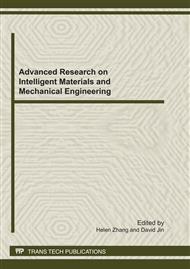p.88
p.92
p.96
p.100
p.104
p.109
p.113
p.117
p.121
Force Analysis and Studies on Track Frame of Hydraulic Drill
Abstract:
According to the actual working conditions of the hydraulic drill, mechanical properties of track frame are analyzed. Through building simple physical model of the overall structure of the hydraulic drilling rig, a kind of finite element simple analysis method is introduced. Systems analysis of the force statuses of the track frame has been done. As a result, a few of dangerous working conditions are determined. Combining the dangerous working conditions and doing the finite element analysis on the track frame, more accurate stress distributions of track frame may be obtained. These provide a more accurate basis to track frame design.
Info:
Periodical:
Pages:
104-108
Citation:
Online since:
August 2011
Authors:
Price:
Сopyright:
© 2011 Trans Tech Publications Ltd. All Rights Reserved
Share:
Citation:


